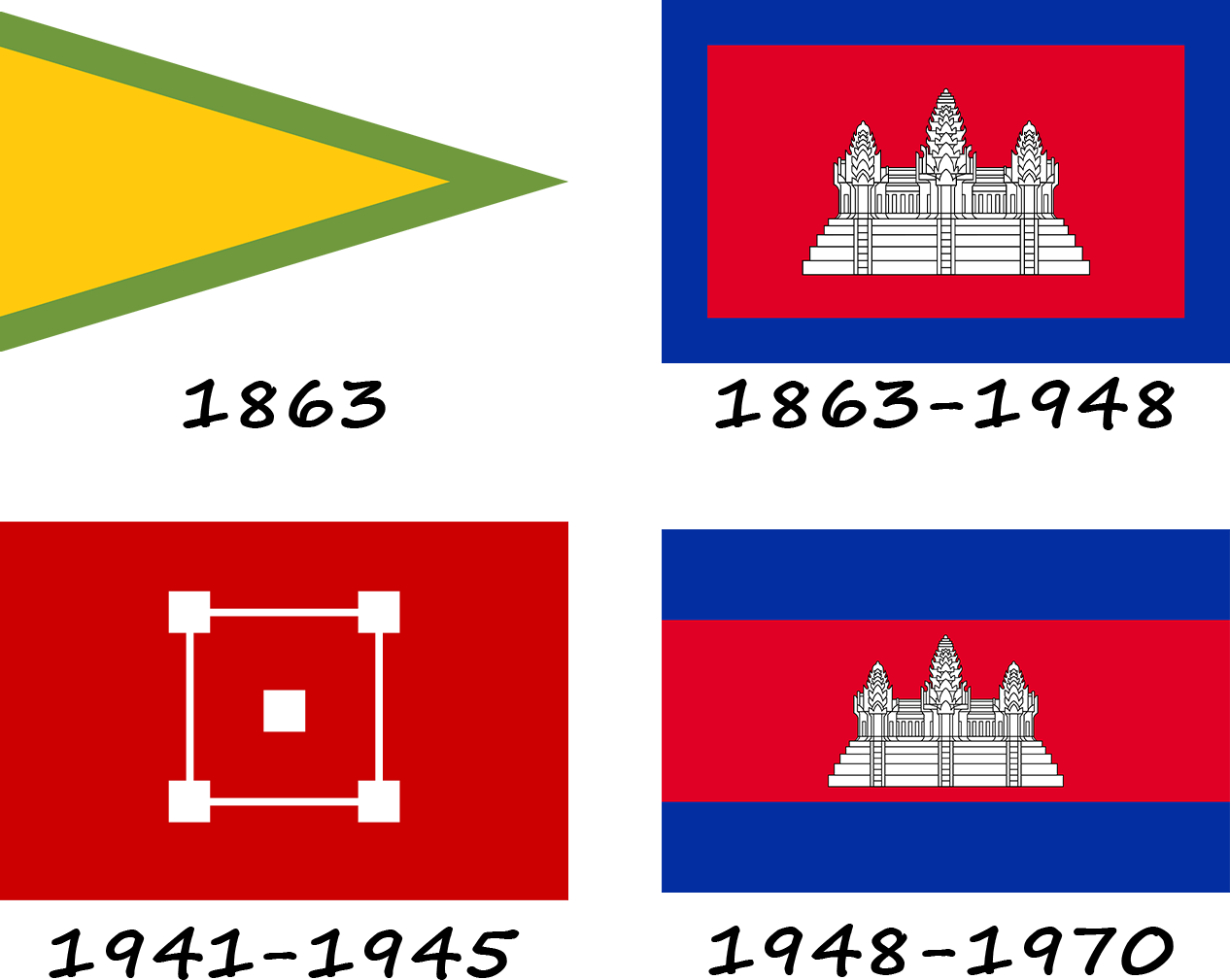The Cambodian flag has three stripes, with the middle red stripe twice as large as the blue stripes at the top and bottom. In the center of the flag is Angkor Wat.
The Cambodian flag has three stripes, with the middle red stripe twice as large as the blue stripes at the top and bottom. In the center of the flag is Angkor Wat.
Throughout its existence, Cambodia has changed about ten flags. The first flag of the Khmer Empire was a flag with a yellow triangle and a green outline, which lasted until 1863.
From 1863 to 1948, there was the flag of the Kingdom of Cambodia, which represented the French protectorate and had a red background with a blue outline in the center of which was the Royal Palace - Angkor Wat.

During the Japanese occupation in Cambodia from 1941, the Japanese established a red background with a large white square in the center, which had corners in the form of small squares and another in the center. After World War II and the defeat of Japan in 1945, the flag of the French Protectorate was restored.
When Cambodia gained political freedom from France, a new flag was adopted, featuring two blue stripes at the top and bottom and a twice-wider red stripe between them, as well as a white image of Angkor Wat in the center of the flag.
After the military revolution of 1970, Cambodia was renamed the Khmer Republic and an autocratic regime was established. The flag had a blue background with three white stars in the upper right corner and a red rectangle with Angkor Wat in the upper left corner.
In 1975, Khmer Rouge leader Pol Pot came to power and renamed the country Democratic Kampuchea. Pol Pot's flag had a simple design - a red background with a yellow image of a palace resembling Angkor Wat.
After the invasion of Cambodia by Vietnamese troops in 1979, the Rescue Front took power and established the People's Republic of Kampuchea. The Cambodian flag of that period was similar to the previous one, except that it had five towers instead of three.

In 1990, a blue stripe appeared on the national symbol of Cambodia, dividing the flag in half and forming a horizontal blue and red bicolor as a background and the Royal Palace in the center.
The government was under the control of the UN, which restored stability in Cambodia in 1992. The flag of the UN during this period was a blue cloth with a white map of Cambodia and the inscription "Kampuchea" in the middle. The UN plays a peacekeeping role around the world, and UNTAC (United Nations Transitional Authority in Cambodia) was created to restore stability to the country that had been affected by violence. It was the first organization to govern a sovereign state and hold successful elections in Cambodia's history.
In 1993, after the fall of the Khmer Rouge and the restoration of the monarchy, the post-French sovereign flag was adopted and is still used today.